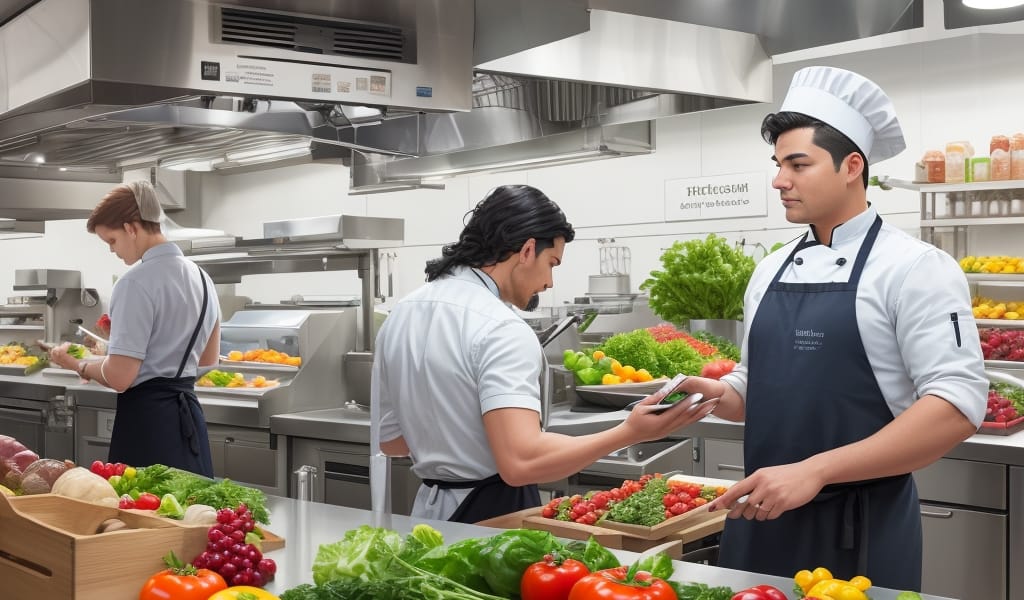Key Takeaways:
- Implement blockchain technology to enhance food safety and build consumer trust by providing complete transparency in your food supply chain.
- Consider adopting food blockchain systems to improve traceability, enabling quicker responses during foodborne illness outbreaks or recalls.
- Leverage blockchain’s immutable nature to combat food fraud, ensuring the authenticity of your food products.
- Use blockchain technology to validate and showcase your sustainable and ethical sourcing practices, boosting your restaurant’s reputation.
- Explore partnerships with food blockchain providers to streamline operations, reduce waste, and improve inventory management.
How Blockchain Could Change Food Traceability Forever
Track food from source to table with blockchain
Imagine a scenario where you can instantly verify the origin, freshness, and journey of every ingredient served at your restaurant. Blockchain technology promises exactly this, reshaping food traceability by offering transparent, tamper-proof records accessible to restaurants, suppliers, and customers alike. As food safety concerns and consumer demands for transparency continue to grow, adopting blockchain for food traceability is shifting from futuristic idea to practical necessity.
Understanding Blockchain in Food Traceability
Blockchain is a decentralized digital ledger technology that securely records transactions and data across numerous computers. Unlike traditional databases, blockchain records are immutable, meaning data can’t be altered once entered. In the context of the restaurant industry, blockchain can create transparent supply chain records, tracking food items from farm to table.
Each transaction—harvesting, packaging, shipping, storing, or delivery—is captured on the blockchain, providing a clear, auditable history. This transparent record enhances accountability among suppliers and distributors, ensuring food safety compliance and trustworthiness.
Why Blockchain Matters for Food Safety and Traceability
Food recalls and contamination incidents can severely damage a restaurant’s reputation, often leading to lost customers and revenue. Blockchain technology helps mitigate these risks by providing instant access to detailed product information. Here’s how blockchain directly impacts restaurant operations:
- Rapid Response to Food Safety Issues: If contamination is detected, blockchain enables quick identification and removal of affected products, minimizing harm and cost.
- Enhanced Consumer Trust: Customers increasingly demand transparency regarding food origins. Blockchain provides verifiable information, enhancing consumer confidence and loyalty.
- Streamlined Regulatory Compliance: Blockchain simplifies compliance by maintaining accurate, easily accessible records, reducing the administrative burden associated with audits and inspections.
Real-World Examples of Blockchain in the Food Industry
IBM Food Trust Initiative
The IBM Food Trust is a blockchain-based collaboration platform enabling food companies, retailers, and suppliers to share transparent supply chain data. Notably, Walmart adopted IBM’s blockchain system to drastically reduce the time needed to trace produce origins. For instance, tracing mangoes from store shelves back to the original farm previously took up to seven days but now takes mere seconds using blockchain.
Carrefour’s Blockchain Initiative
European supermarket giant Carrefour implemented blockchain technology to improve transparency and consumer trust. Customers scan QR codes on products such as eggs, poultry, and fresh vegetables, immediately viewing detailed information about sourcing, farming methods, and shipment conditions. Carrefour reported increased sales and consumer engagement due to this transparent approach.
How Restaurants Can Implement Blockchain Technology
Step 1: Identify Your Traceability Goals
Determine your restaurant’s specific objectives. Are you aiming to enhance food safety, improve supplier accountability, or meet customer demands for transparency? Defining clear goals ensures focused implementation and measurable benefits.
Step 2: Collaborate with Technology Partners
Select experienced blockchain technology providers specializing in food traceability solutions. Evaluate providers based on their industry reputation, experience, data integration capabilities, and compatibility with your existing systems.
Step 3: Engage Suppliers and Stakeholders
Blockchain works effectively when all supply chain participants actively engage. Clearly communicate your objectives and the benefits blockchain brings, such as improved efficiency, reduced recalls, and strengthened consumer confidence. Encourage collaboration by highlighting mutual advantages.
Step 4: Integrate Blockchain with Existing Systems
Blockchain solutions should integrate seamlessly with existing inventory, ordering, and management systems. Work closely with your tech provider to ensure smooth data flow, minimal disruption, and optimal user experience for your staff.
Step 5: Educate Your Team and Customers
Provide comprehensive training to restaurant staff on how to utilize blockchain-based traceability systems effectively. Additionally, educate customers on the benefits of blockchain-enabled transparency, using menus, websites, and social media channels to communicate your restaurant’s commitment to food safety and sourcing.
Challenges and Considerations for Blockchain Adoption
While blockchain presents significant advantages, restaurants should carefully consider potential challenges:
- Initial Investment: Blockchain solutions may require significant upfront costs, including technology acquisition and employee training.
- Supplier Participation: Blockchain’s effectiveness depends on supplier cooperation. Smaller suppliers may lack resources or expertise to integrate effectively.
- Data Privacy and Security: Transparent supply chain data raises questions around data privacy. Restaurants must clearly define access levels and data-sharing policies to protect sensitive information.
Practical Tips for Restaurants Considering Blockchain
To maximize blockchain benefits and overcome potential challenges, restaurants should:
- Start small with pilot projects focusing on specific products or suppliers, allowing adjustments and refinements before broader implementation.
- Clearly define roles and responsibilities within your team to manage blockchain integration effectively.
- Regularly measure blockchain implementation impacts, including cost savings, supply chain efficiency, and customer satisfaction improvements.
- Stay informed about emerging blockchain developments and industry best practices to continuously optimize your approach.
The Future: Expanding Blockchain Applications in Food
Blockchain technology, already proving its worth in food traceability, holds massive potential for broader applications within the restaurant industry. Future possibilities include:
- Sustainable Sourcing: Restaurants can leverage blockchain to verify sustainable sourcing claims, enhancing eco-conscious branding and consumer trust.
- Reducing Food Waste: Blockchain data can improve inventory forecasting and management, minimizing food spoilage and waste.
- Enhanced Customer Experiences: Integrating blockchain with digital menus and ordering systems provides customers instant insight into food origins and nutritional information, creating engaging dining experiences.
Conclusion: Blockchain as the New Standard for Food Traceability
Blockchain technology offers transformative potential for food traceability, providing restaurants unprecedented transparency, efficiency, and consumer trust. Industry leaders like Walmart and Carrefour have already demonstrated blockchain’s real-world value, significantly enhancing food safety tech and supply chain accountability.
While adopting blockchain requires careful consideration and investment, the competitive advantages—rapid recall management, streamlined compliance, customer trust, and sustainability opportunities—are substantial. By proactively embracing blockchain traceability, restaurants position themselves at the forefront of food trends, ready to meet evolving consumer expectations and regulatory landscapes.






Comments
Be the first to comment on this article.